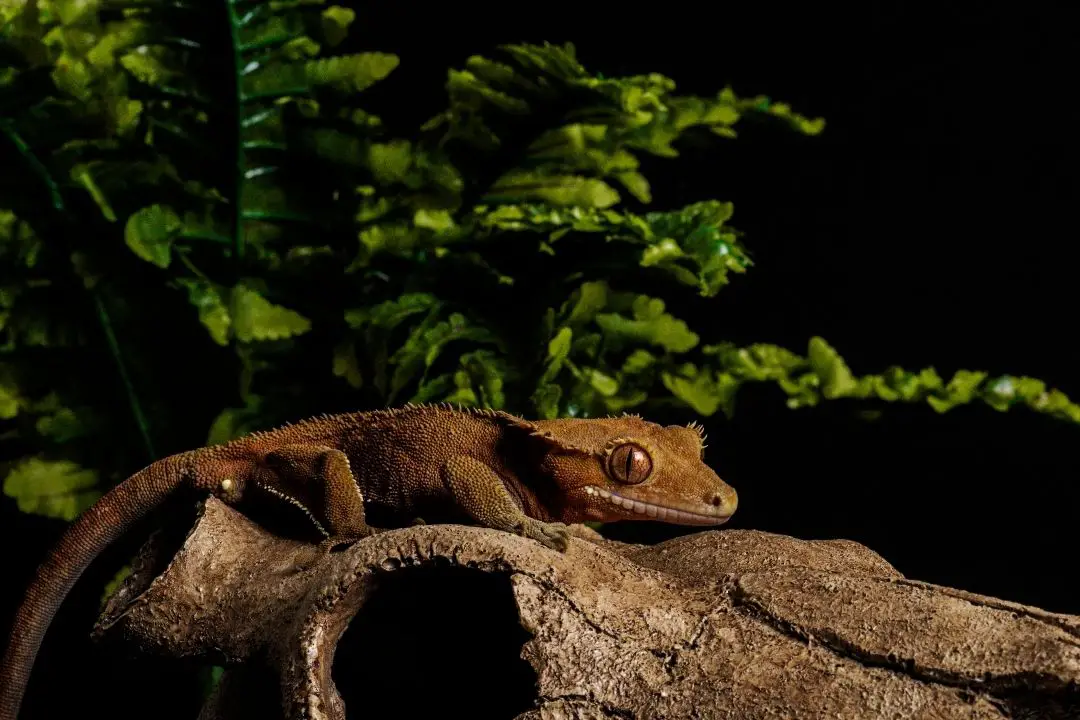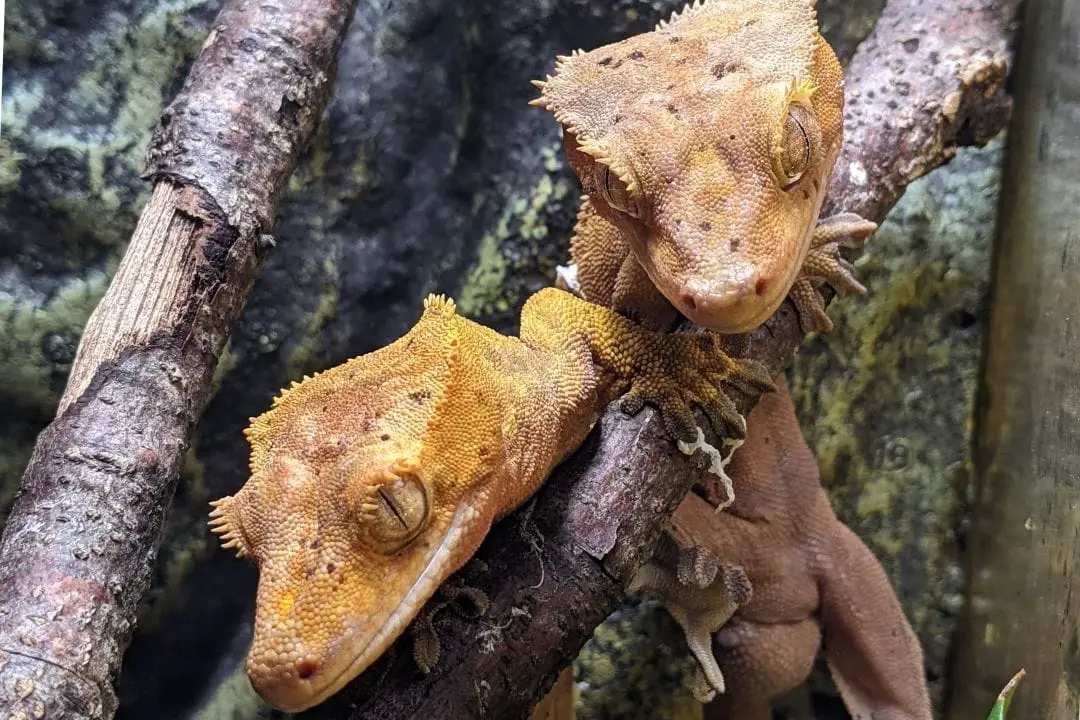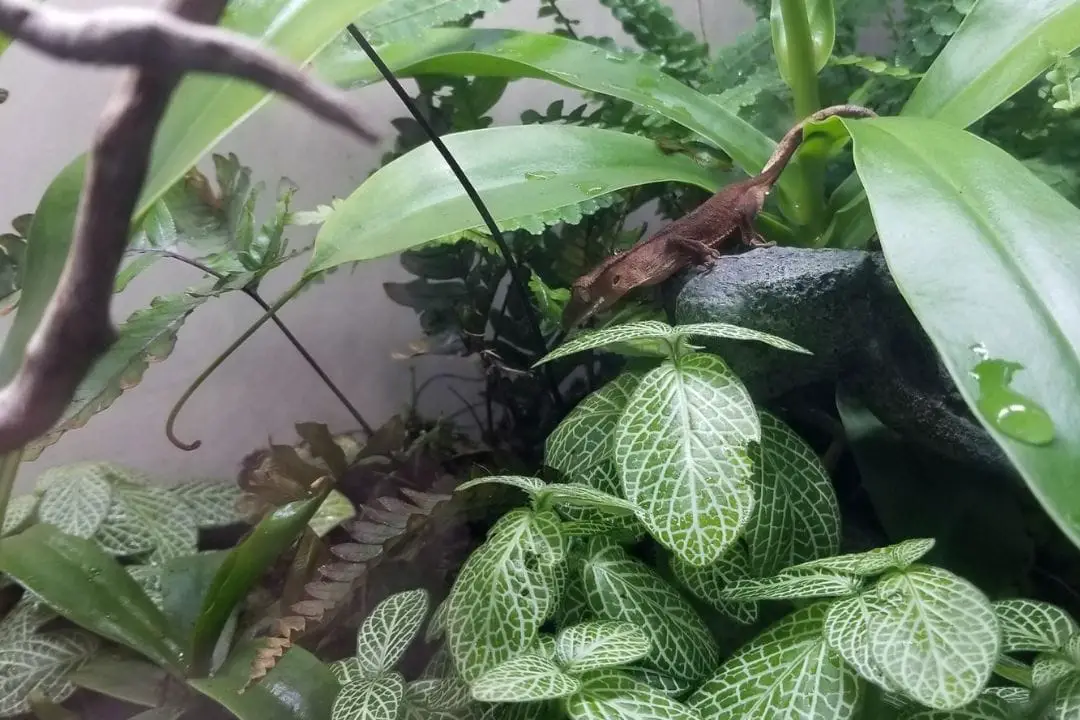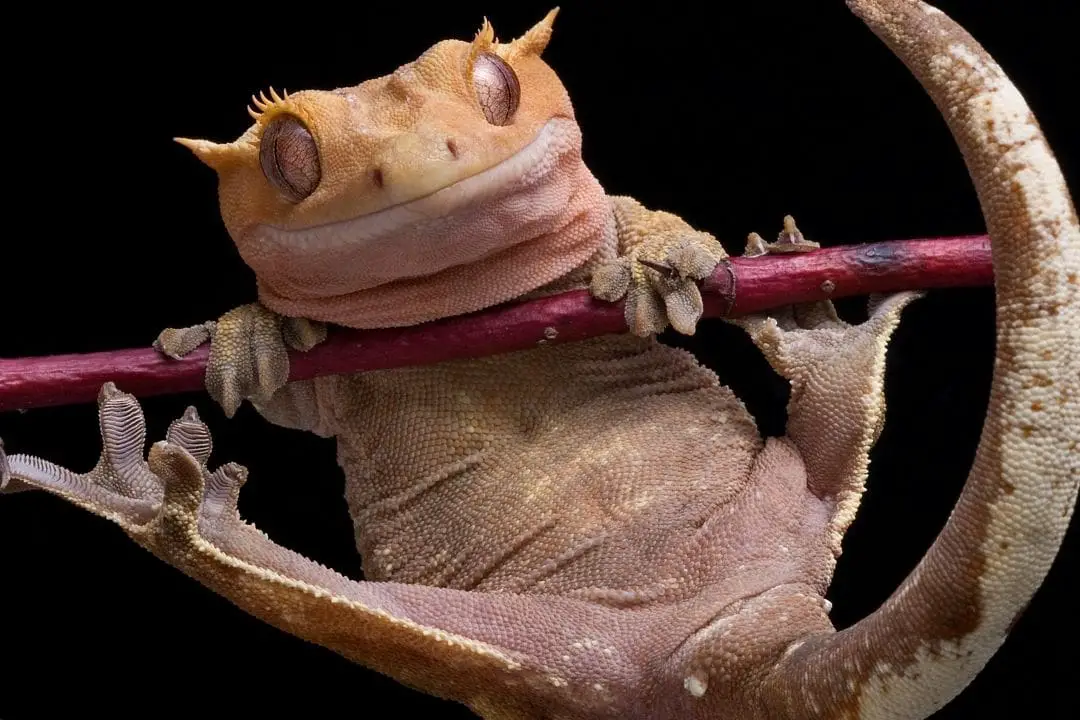Crested geckos (Correlophus ciliatus) are a great little species of gecko that make perfect first lizards.
Since they like it cool and humid, all you need to do is get the right substrate to make sure your lizard is at the perfect humidity level.
Here is a list of the best substrates for crested geckos. I’ll be going over the pros and cons of each substrate option so you can pick the right substrate for you.
Some options are cheaper than others but may take more effort from you.
Bioactive Soils
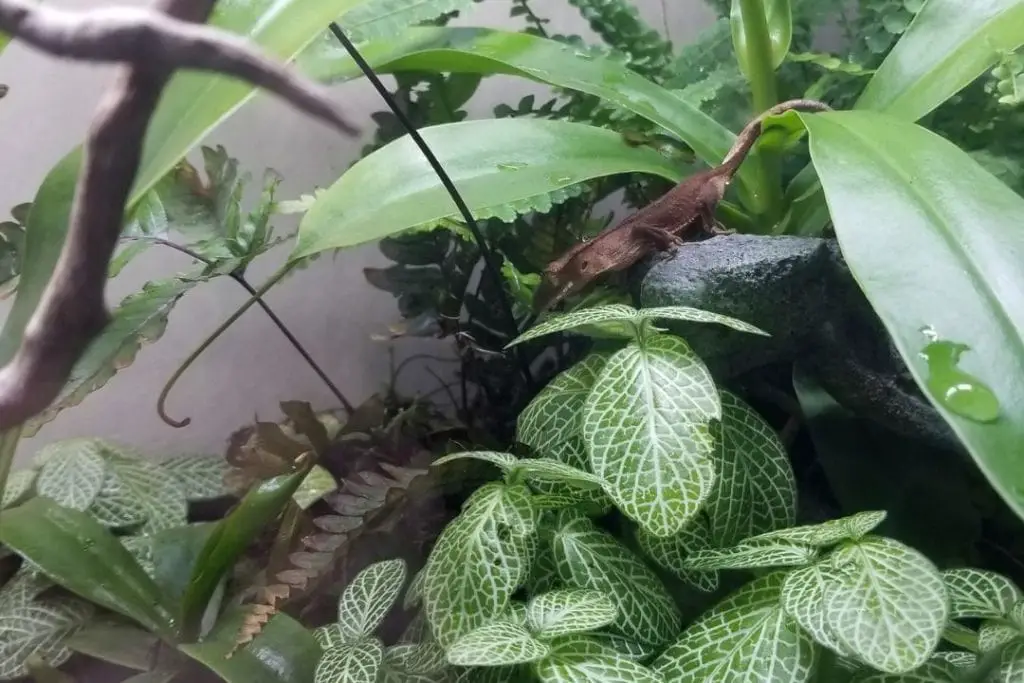
Bioactive soils are perfect for anyone looking for a bioactive enclosure.
Crested geckos do very well in bioactive and you have the benefit of having a clean-up crew of beneficial insects to help clean up any waste.
Josh’s Frogs BioBedding Tropical Bioactive Substrate
- NO CHANGING BioBedding for years when used in combination with microfauna like Springtails and Isopods; saving you time and money
- CLEANER ENVIRONMENT for your pet due to the bioactive cycle, decreasing the risk of bacterial disease
- ATTRACTIVE and NATURAL appearance because it is closer to replicating your pet’s native habitat than traditional substrates
- LIVE PLANTS will grow well in BioBedding which are safer than plastic for pets with delicate skin
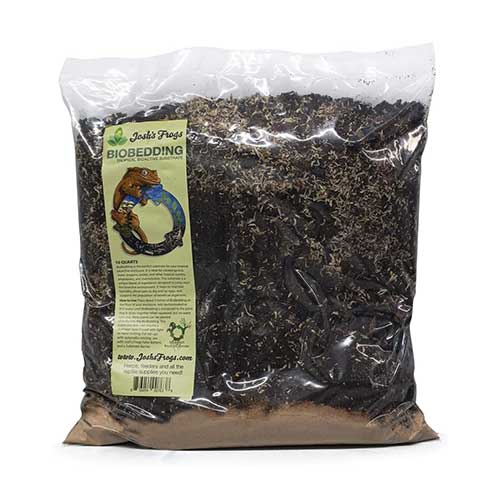
You may still need to do some spot cleaning, but the insects will take up what you miss.
Bioactive soils are also good for planted tanks. Since bioactive soils are meant for reptiles, you don’t need to worry about anything that could make your pet sick.
There are a number of brands on the market that you could pick for a crested gecko enclosure.
Most bioactive sellers also allow you to buy plants and your cleaner insects all at once. See my list of 30 plants that are safe for crested geckos.
Make sure you pick one meant for tropical geckos. You will also need a drainage layer, screen or a garden membrane to keep the substrate out of your drainage layer, and things like leaf litter.
You will have to adapt your cleaning since throwing out the substrate means throwing out the cleaner insects.
An adult crested gecko that is hydrated can pass any ingested bioactive substrate, but hatchlings may struggle. You can also allow crested geckos to lay in this substate and the eggs should be able to hatch with ease.
Pros: Holds humidity, allows for bioactive and planted enclosures, small particle size is safe for adults
Cons: Needs to be used as bioactive, must keep up the populations of beneficial insects, not great for juveniles since they can struggle to pass any soil, higher upfront cost
Reptisoil
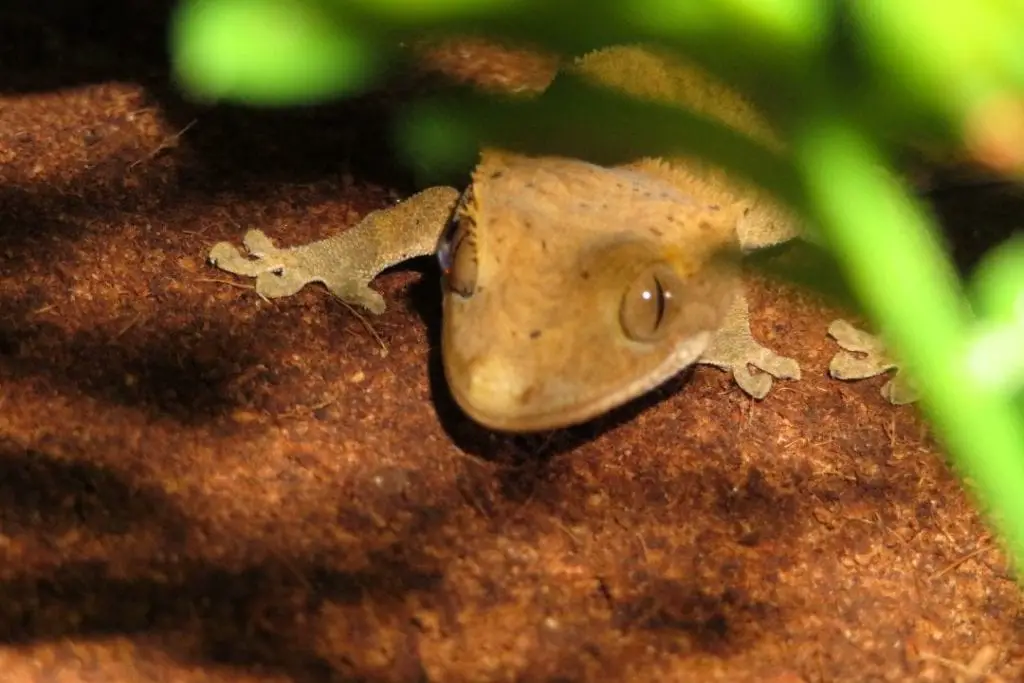
Reptisoil is made by Zoo Med. This is a soil product that is made from peat moss, soil, sand, and carbon. It holds humidity well and will allow for a planted tank.
This is also a great substrate for breeding animals since the female can lay her eggs right in the soil.
REPTISOIL Tropical Substrate
- Perfect substrate to create a tropical enclosure setup.
- Works well for burrowing and egg laying species
- Good for plant growing
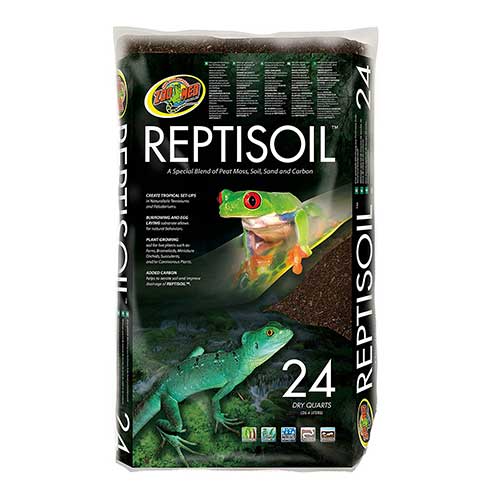
If you want an option that you can just use with minimal fuss, this is a good choice. I do still suggest a drainage layer with a screen or other barrier if you want to use this to plant the enclosure.
It does have good enough drainage for plants. The main issue with this is that it can get everywhere if you aren’t careful. It is also a bit pricey compared to a DIY option.
This soil substrate also isn’t quite safe for very young geckos. Since it is a soil product, the particles can block up a young gecko.
Pros: Easy to use, easy to find, holds humidity, allows for laying behaviors, good for plants
Cons: Bit more expensive, not safe for juveniles
DIY Mix
Making your own substrate is cheap and you can buy larger amounts. This is great if you own multiple animals since you can make up one substrate mix.
Just make sure the species have similar substrate needs. It can be easy to find the parts of the mix in most home improvement stores.
You just need organic topsoil and coconut fiber. You can use fine play sand to help prevent compaction.
Zoo Med Eco Earth Coconut Fiber Bricks
- A compressed coconut fiber expandable substrate that can be safely composted or recycled.
- Compressed brick will expand to make 7 to 8 liters of substrate.
- Made from an eco-friendly renewable resource.
- Naturally absorbs and breaks down odor and waste products.
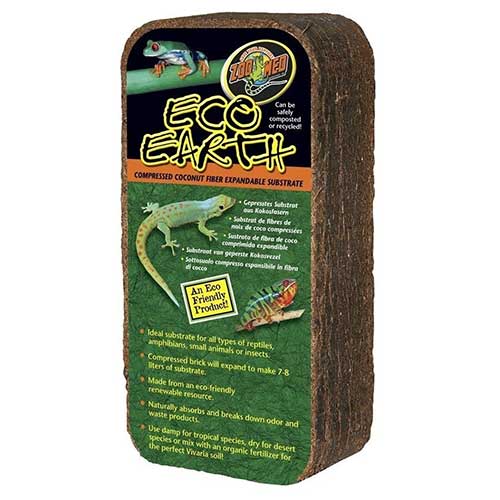
Generally, you want soil, something to hold humidity, and something to prevent compaction of the substrate.
So long as everything is organic and free of things to hold moisture like vermiculite, it is safe to use. Use 60% topsoil and 40% coconut fiber.
You can adjust this recipe to help fit your needs as well. Just make sure all the parts of the mix are organic. Some people prefer using peat moss (sphagnum moss) for the humidity-holding portion of the substrate.
Sift your potting soil and coconut fiber to help remove big particles and reduce the risk of compaction. The basic screen at the hardware store works well.
The best factor is that this is the cheapest substrate option for crested geckos.
You can easily buy enough substrate for months for under $20. You do need to mix it yourself. It also isn’t safe for juvenile geckos. Once again make sure you keep it organic to avoid any toxic components that can harm your gecko.
Pros: Cheap, easy to find, easy to make in bulk, can be good for plants, holds humidity
Cons: Has to be organic, might need to alter it, have to measure it out, not safe for juveniles
Lugarti Natural Reptile Bedding
Lugarti natural reptile bedding is a combination of sphagnum moss, clay, and very fine sand. It is a good choice for holding humidity but the surface stays drier to help reduce mold growth.
Lugarti Natural Reptile Bedding
- Perfect mix for growing live plants and maintaining all sorts of different plant species!
- Only substrate on the market that can be safely used with newborn baby reptiles
- It has natural mold inhibitors (derived from blueberries) that help prevent it from molding, often experienced with coco coir products.

It also allows for burrowing behaviors and can support plant growth. The manufacturer claims it has great odor control and is also safe for newly hatched crested geckos with no risk of impaction.
This is a good choice, but it can be a bit pricey and it is not easy to find. It is stocked with much fewer suppliers so you may struggle to find it.
This is one you will likely need to plan ahead and order online. It does allow for crested geckos to lay and hatch without any need for you to risk moving the eggs and incubating them yourself.
Just be sure you check very carefully when you are replacing the substrate or you may throw out your babies as well.
Pros: Holds humidity, will support plants, allows for eggs to be laid and incubated right in the enclosure
Cons: Bit hard to find, more expensive than other options
Paper Towels
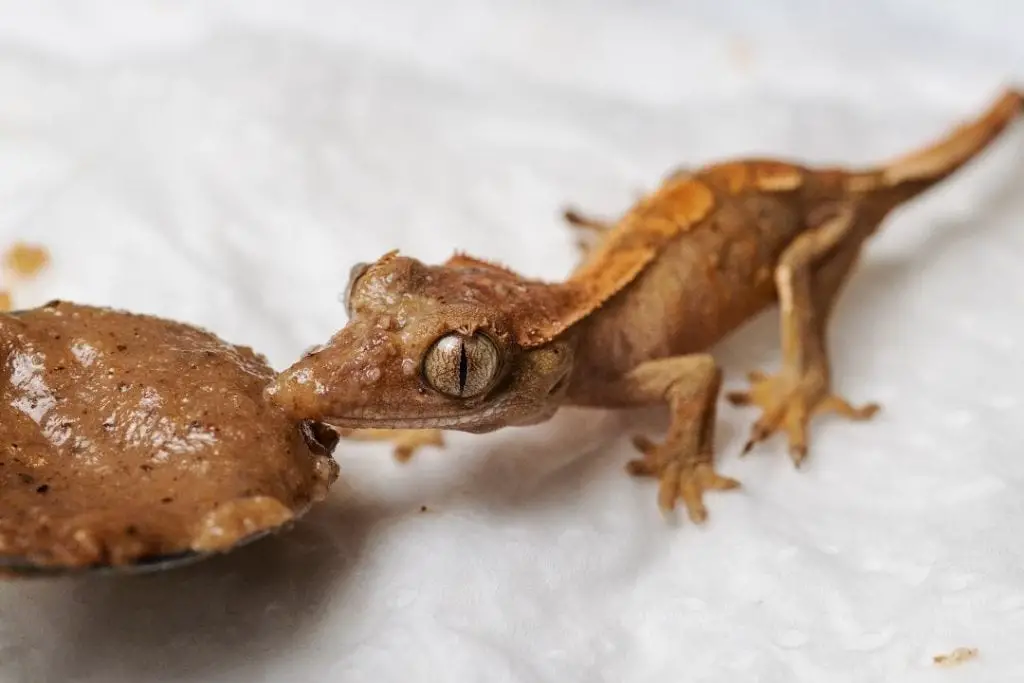
Paper towels are not the prettiest substrate, but they work well for quarantine and for babies. Any new animals should be kept on plain white paper towels until you know that they are eating and eliminating properly.
Paper towels also make it easy to spot problems like mites on new animals. You should layer a few up in the bottom of the enclosure deep enough to completely catch any waste your gecko produces.
The main issues with paper towels in crested gecko enclosures tend to be the look and that they do not hold humidity very well.
You also need to completely replace paper towels once a week even if they aren’t soiled. This can make them feel a bit wasteful over time since you will be using so many of them. However, paper towel is easy to find and many reptiles enjoy the empty tubes as a fun enrichment and hide option.
Make sure you use plain paper towels and do not opt for special features like patterns. Look for something highly absorbent and watch for any signs of molding.
You should be replacing it often enough to avoid problems, but it is still good to keep an eye on it. Some breeders have noted that crested geckos may tear and eat paper towels, which can cause health problems.
I have only found a few reports, but it is something to keep in mind if you are using paper towels. It was noted that the paper towel was passed but caused prolapse and other health issues.
Pros: Cheap, easy to find, good for quarantine and health checks
Cons: Doesn’t look very good, have to replace it very often, wasteful
Shop Towels
Another very absorbent option is the blue shop towels you may be familiar with from auto shops. These are a bit sturdier than paper towels and you may be able to find them in bulk for cheap.
You can sometimes find ones with better absorbency than standard household paper towels for less. They are also plain, but the color can make it a bit hard to tell if there has been a color change in your gecko’s poop.
The structure may also make it a bit easier to miss mites. Shop towels are also one that needs to be completely replaced with every mess and will need to be replaced entirely once a week.
Shop towels and paper towels are very similar so if you need to choose between them just go with what is cheaper for you. This can depend on your area and what sales are available.
Pros: Cheap, good for quarantine, easy to find, easy to buy in bulk
Cons: Color can make it a bit hard to see changes, need to change often
Butcher’s Paper
Butcher’s paper follows the same rules as other substrates in this category. While it isn’t much for looks, it does allow you to monitor your gecko’s health.
It is harder for geckos to rip this, so it is less likely to be eaten. If your gecko seems to be intent on eating paper towels, this is a good replacement. It is easy to find and can be cut to size.
It is not absorbent and will not help with the humidity at all. You will need to mist often and offer a humid hide to help keep up the humidity.
It will need to be completely replaced when soiled and you must also replace it weekly. It is cheap and easy to find. Most butcher’s paper is brown, but you can find white. It is easy to find large amounts.
Pros: Easy to find, good for quarantine, gecko less likely to eat it, cheap
Cons: Must be replaced often, will not help with humidity, not absorbent
Other Non-Particulate Substrates
Shelf liners are sometimes recommended, but you cannot use ones that are made with PVC or anything with a strong plastic odor.
PVC off-gasses and can seriously harm or kill your gecko. You can detect it if you smell a plastic or chemical smell. Shelf liners are easy to clean if you can find a safe option.
You do need to replace them to help prevent the growth of bacteria. Most are not made of materials that are easy to sterilize. Cypress mulch mats are sometimes used since they hold humidity, but you still need to replace them regularly. Also, most of this class of substrate will not hold humidity well.
Tile is sometimes used, but I do not recommend it since it can hold heat at the bottom of the enclosure where your gecko will go to cool off.
Pros: Easy to find, lasts a bit longer
Cons: Can be dangerous, will not hold humidity
Unsafe Substrates
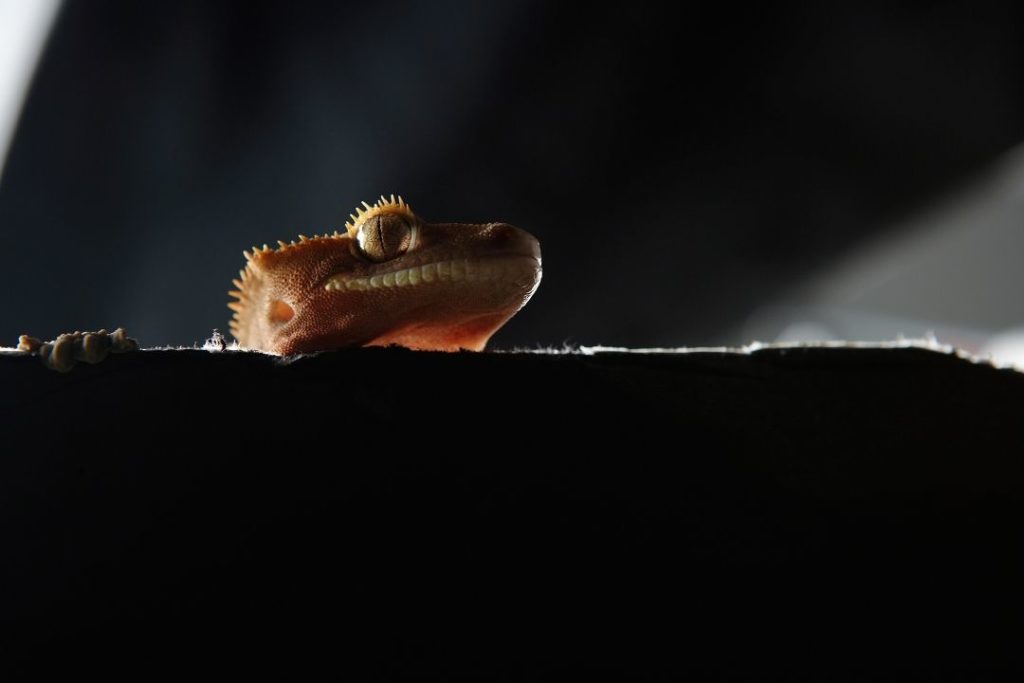
There are many substrates I do not recommend. First, anything with large particle size. This includes mulch and shavings. These are likely to be ingested and can cause impaction.
Coconut coir and similar substrates should never be used on their own.
The fibers can expand in your gecko’s stomach and seriously harm or kill it. Anything with cedar or pine should be avoided for all reptiles. The oils are toxic to reptiles.
Reptile carpet is not safe for crested geckos.
The fiber can catch toes or teeth and harm your gecko. Linoleum and shelf lines can off-gas and cause respiratory problems at best.
Sand is not an appropriate substrate since it is dry and “calci-sand” should never be used for any reptile. “Litters” meant for small animals and animal bedding should not be used. Most of these beddings are meant for mammals and are too dry for crested geckos.
Even ones meant for reptiles may not work for a tropical animal. There is also a risk of ingestion with these substrates.
Conclusion
For a complete guide to enclosure setup, feeding, daily care and breeding,
check out my Complete Care Guide For Crested Geckos
I hope this guide has helped you pick the right substrate for your gecko. Remember, you will want at least 3 inches of substrate for a crested gecko.
Go for around 5 inches if you will be planting the enclosure. If you have any questions, please leave them below.
